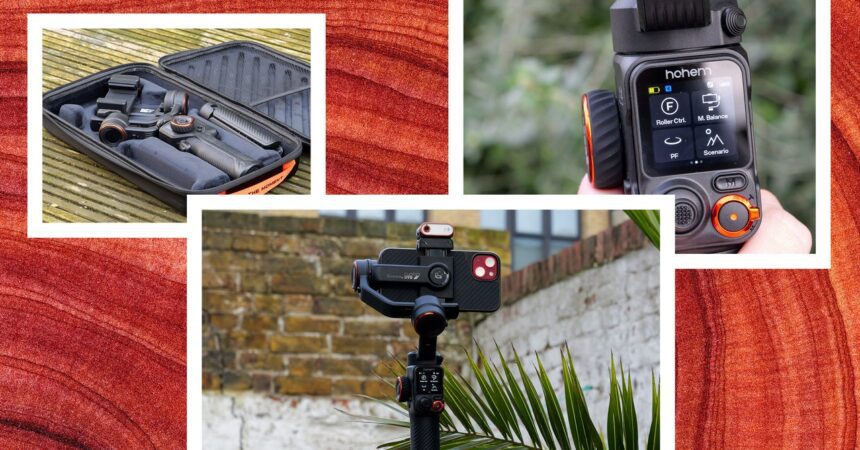For filmmakers and various content creators, smartphones have become viable primary video cameras. In fact, film director Danny Boyle is utilizing an iPhone 15 to film his forthcoming zombie sequel, 28 Years Later. However, to enhance their footage to a truly professional level, even the most advanced smartphones require some additional tools. Boyle’s iPhone appears to be significantly modified with numerous high-end accessories, including expensive cinema lenses.
For those of us on a tighter budget, a mobile three-axis gimbal serves as the perfect smartphone accessory to elevate phone footage, automatically stabilizing handheld shots and effectively eliminating shakes and jitters far better than any built-in image stabilization. After using it for a while, I’m thrilled to report that the Hohem iSteady M7 is the most sophisticated and feature-rich smartphone stabilizer I have ever tested.
Photograph: Sam Kieldsen
A Substantial Gimbal for Larger Phones
The iSteady M7 features a robust and practical design with a striking color scheme that may not appeal to everyone. It lacks the compact folding capability of smaller models like the Insta360 Flow or DJI Osmo Mobile (WIRED Recommends 8/10). However, it can be semi-collapsed into a flatter shape for transportation, fitting snugly into a hard carry case that is included. Still, it is bulkier (13.2 x 6.2 x 2.2 inches when in the folded state) and heavier (25.6 ounces, including the mini tripod attachment) than many other gimbals I have tested.
This additional weight provides the advantage of supporting and stabilizing heavier loads. With its large grip and powerful motor, the iSteady M7 can accommodate smartphones weighing up to 17.6 ounces and measuring up to 0.49 inches thick, making it compatible with even foldable phones like the Samsung Galaxy Z Fold6. This means you can accessorize your phone with cases or lens attachments without sacrificing stabilization. In contrast, most gimbals only support smartphones weighing up to 10.5 ounces.
Photograph: Sam Kieldsen
As for the stabilization itself, I found it to be impeccable and adaptable. Some manual balancing was necessary for my iPhone 13 but only involved a straightforward slide along one axis. Once completed, the gimbal managed the rest, automatically leveling the phone and tracking my movements according to the selected preset modes. The options include Pan Follow, which locks the gimbal along tilt and pitch axes; Pan Tilt Follow, which locks only on the pitch axis; and POV, which follows movements across all three axes. Additionally, a custom mode allows users to select which axes they want control over, and the follow speed can also be adjusted manually.










